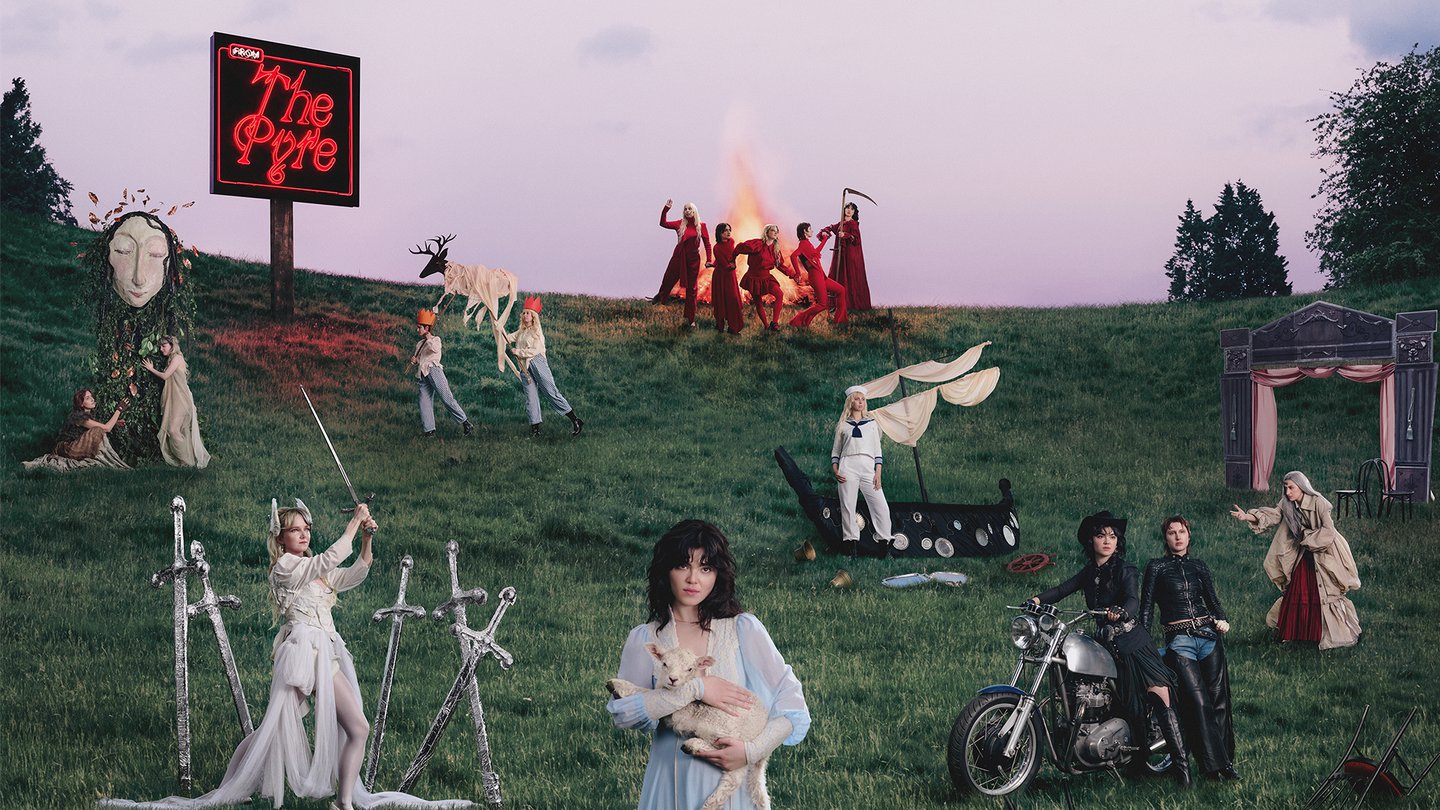Founders and creative directors of the Los Angeles-based studio See You Later, Darrius Medina and TJ Hoover, see this need to chase uniqueness to be viral as a result of post-pandemic music culture and the explosion of TikTok, which has contributed a flood of new artists all trying to differentiate themselves. Darrius and TJ, who primarily work on set design, lighting, sound, and other aspects of creative direction for live performances, share how it’s not enough for something to look cool anymore. “It needs to be derived from meaning and tell a story that’s threaded through the greater narrative,” TJ explains. “There’s more of an emotion involved in creating and conceptualising these sets, which has made the process more challenging but also fun.”
Working with artists such as Missy Elliott, Sabrina Carpenter, and Doechii, the show designers often borrow from film, theatre, and fashion to make every show a cohesive, emotionally resonant experience for the artist and the audience. Darrius expands further: “We’re always thinking about how we can create something that enhances the great narrative of this artist’s work, rather than something that distracts or takes away from it.” The studio’s work on Doechii’s Grammys performance was underpinned by this idea of respecting the album and the message it reverberated. “The narrative was all about how Doechii never misses, and that there is only one real Doechii, which we wanted to highlight with a set that looked like a clone factory and backup dancers who were styled exactly like the rapper. We used conveyor belts and different elements like colour and materiality to intentionally make the audience feel like they are in a factory space,” TJ shares.
The expectation from fans who now want an experiential concert that builds on the visual world crafted through the album or on social media is something both Darrius and TJ acknowledge has shifted how they approach projects. “We’re thinking about stage design as an extension of the album campaign and its branding. We see it as incorporating simple branding elements like colour and materiality that resonate with the world that the artist has created. Sabrina Carpenter is a great example of that because she exists within the world of 60s vintage glamour, and we can draw inspiration from how cohesive her artistic persona is.”
On the surface, spectacle seems to be the one factor that guarantees a successful music campaign, but Darrius and TJ share that it is not about the budget but more about trusting a singular vision and letting it inform your creative decisions. They tell me that something as simple as associating yourself with a colour, such as Olivia Rodrigo’s association with purple, can help set you apart. In an industry where virality can grant an artist fleeting fame, world-building on even a small scale can act as an antidote that gives the audience a chance to step into a visual landscape that can be revisited and reinterpreted for years to come.
